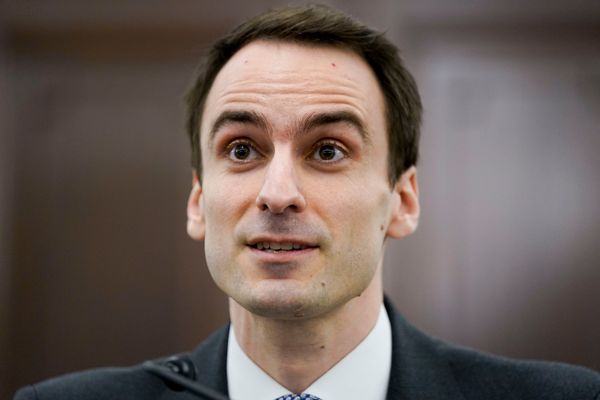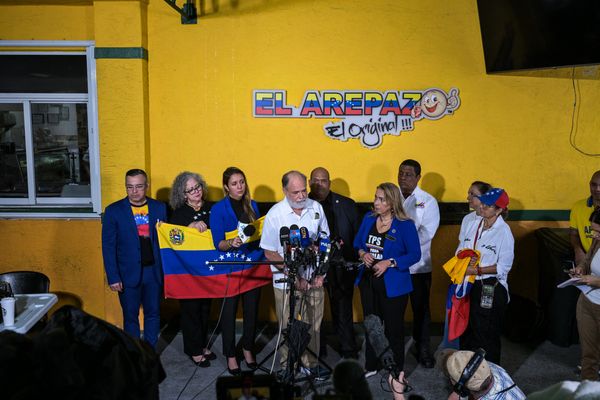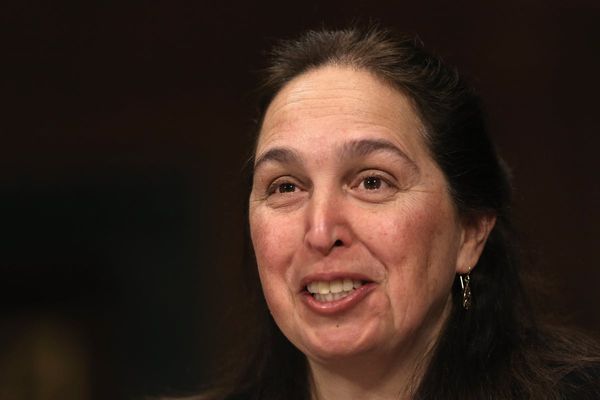
The federal coalition has vowed to start work on nuclear reactors from day one if elected in 2025 in response to fresh doubts about the feasibility of its energy pledge.
Sites required for proposed nuclear reactors would take decades of rehabilitation before they could be used safely, the federal nuclear generation inquiry was told on Wednesday in Melbourne.
"We're talking significant periods of time ... two or three decades," Victoria's Mine Land Rehabilitation Authority chief executive Jen Brereton said.

Nationals leader David Littleproud said "it just reinforces that we've got to get on with the job now - the time for talk's over".
As an energy-rich nation, it was "embarrassing" to almost have the lights go off and be told to turn off the dishwasher or air-conditioning in the middle of summer, Mr Littleproud told reporters in Molong in central-west NSW.
"The very first day we'll start the process of building the first two nuclear power plants," he said, with the coalition ahead in recent polls.
"This is safe technology ... we're not talking about 1950s technology from Russia nor letting the Russians run it.
"We're not putting them where a tsunami is going to take place."
Reactors will be built at seven former coal power plant sites across Australia as part of the coalition's plan - including Victoria's Latrobe Valley - with small modular reactors to start producing electricity by 2035 or 2037 if larger plants are the best option.
"Nearly 80 per cent of those that work in a coal-fired power station can work in a nuclear power plant," Mr Littleproud said.

Electrical Trades Union boss Michael Wright said no-one working in a coal-fired power station anywhere in Australia would be able to transition straight to a nuclear generator.
The inquiry was told there would be no shortcuts on legal obligations to make the sites safe and stable if the federal government compulsorily acquired the freehold land to meet its nuclear generation timeline.
"It's for operators to decide what to do with their asset," Dr Brereton said, with three swathes of the Latrobe Valley to be cleaned up after a century of providing coal to adjoining power stations.
Engie's Hazelwood has already closed, Energy Australia's Yallourn is next and AGL's Loy Yang A power station is due to close in 2035.
A national survey released by the Australian Conservation Foundation found a stark gender divide on nuclear energy, with a mere 26 per cent of women in favour compared to 51 per cent of men.
But only one in three of those men surveyed were willing to live near a nuclear plant, according to the DemosAU poll of 6709 adults.
Climate change movement 1 Million Women surveyed an additional 3351 women and found 93 per cent were concerned about nuclear energy, with its potential to derail renewable energy the top concern.

The Clean Energy Council slammed the private sector "base case" the coalition relied on for nuclear costings, saying any new investment must come at the least cost to Australian consumers.
"Only renewable energy - solar, wind, hydro - together with energy storage is capable of delivering on this, and it's being built right now," a spokesperson for the industry body told AAP.
Protesters outside the hearing, including nuclear-free campaigner Dave Sweeney, said renewable energy already provided 40 per cent of the nation's electricity needs.
"Australia's energy future is renewable, not radioactive," Mr Sweeney said.







